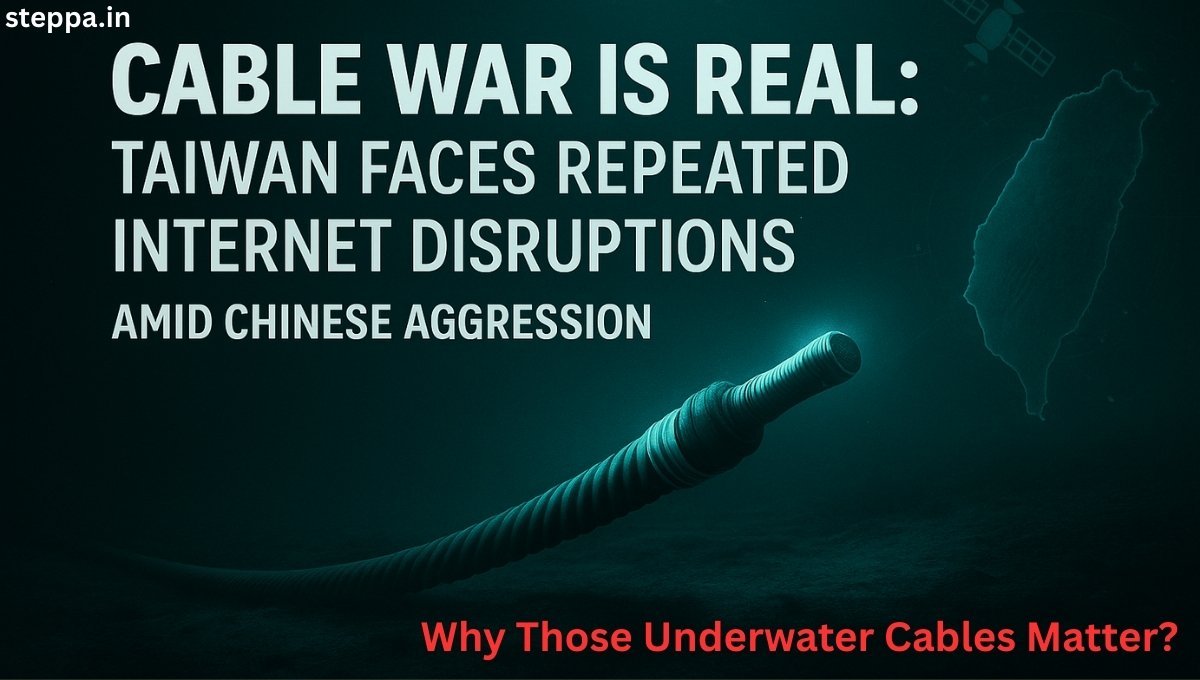Taiwan’s radar has been lighting up lately. Not from Chinese fighter jets or warships inching closer, but from repeated underwater cable disruptions (Taiwan internet attack 2025) that could cut the island off digitally. And here’s the spine-tingling part: the US Senate is planning to step in, backing Taiwan’s cable security in an unlikely yet crucial defence angle.
China’s Military Muscle Near Taiwan
According to Taiwan’s Ministry of National Defence, they tracked nine Chinese naval vessels and one aircraft near their waters—just by 6 AM this Friday. The PLA aircraft even crossed the median line and entered Taiwan’s northern Air Defence Identification Zone (ADIZ). The day before, they detected 12 PLA aircraft and seven navy vessels, with 10 warplanes trespassing the ADIZ. Taiwan’s responding, but the frequency is making everyone sit up.
Why Those Underwater Cables Matter
Taiwan uses 14 undersea cables to connect with the world—for internet, banking, tourism, you name it. But since February 2023, at least 11 cable disruptions have happened. Many were linked to vessels lurking over them—intentional, or just shady fishing? Either way, that’s yikes-inducing.
Enter the Taiwan Undersea Cable Resilience Initiative Act—a bipartisan bill introduced in the US Senate by Senators John Curtis (R) and Jacky Rosen (D). It’s not just politics—it’s war by other means.
What the US Bill Wants to Do
The legislation is calling on the State, Defense, Homeland Security, and Coast Guard to:
- Monitor cables in real time
- Develop rapid-response protocols
- Boost surveillance near Taiwan’s cables
- Deepen international coordination
Basically, it’s about sniffing out sabotage before it happens. Termed “grey zone tactics”, these operations fall just below open war—but still pack a punch to Taiwan’s connectivity.
Since 2023, 11 suspicious incidents have been reported. Most involved ships deliberately messing with cable paths. That’s not random. That’s tactical.
US Is Not Alone in This Worry
This bill comes at the same time the US is working on the Taiwan International Solidarity Act—letting Taiwan play in global bodies like the UN even if it’s not officially recognized. Both moves together say: we’re not leaving Taiwan alone.
What’s Taiwan Doing on Its End?
They’re not sitting ducks.
- The Taipei Coast Guard is issuing warnings to ships near cables
- A subsea cable warning system is being rolled out
- They’re reinforcing microwave and satellite backups
- And building legal frameworks to penalize offenders
But honestly, with cables stretching across EEZs (exclusive economic zones), jurisdiction gets messy. That’s why international help matters.
Why This All Matters More Than You Think
- Tech lifeline for Taiwan – No cable? No internet, no banking, no ops.
- Digital warfare is real – It could be the first step in a bigger conflict.
- Global economy risk – Disruptions ripple into Asia and beyond.
- US messaging – It’s a statement: this isn’t just Asia’s problem.
Final Take on Taiwan internet attack 2025
In modern warfare, digital lifelines are frontline weapons. Taiwan’s battling not just ships, but the invisible threads that keep it woven into the world. With China’s grey-zone tactics and vessels shadowing cables, things are getting real.
But now, with the US joining the fight, this isn’t just Taiwan’s issue anymore. It’s become a global call to guard digital lifelines and to show that sabotage in silence won’t go unnoticed.
Also read: India to Field 307 Homegrown ATAGS Guns in ₹6,900 Crore Push—Bye-bye Vintage Artillery
